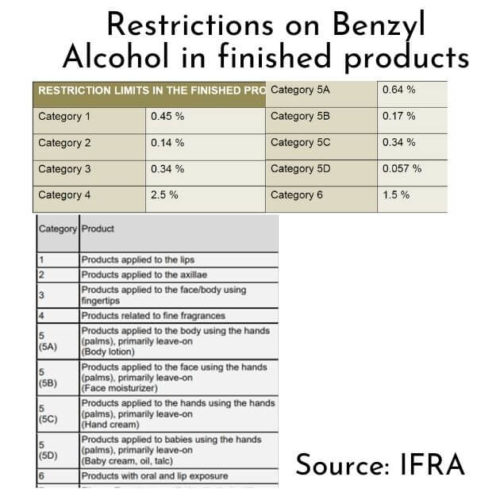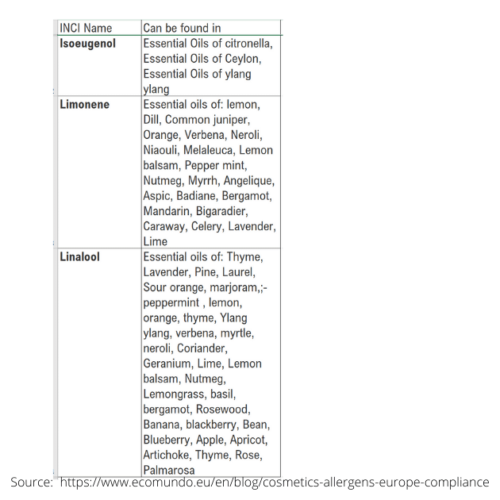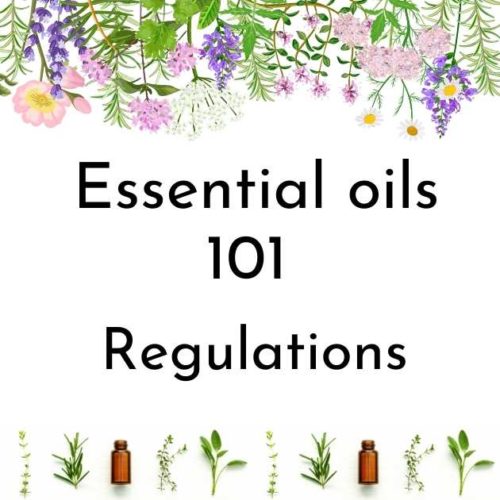This is the fourth and final blog on essential oils that I will be writing until EU regulations have been updated.
50,000 feet summary
I don’t expect you to apply any of the complexity of EU regulations on allergens in your day-to-day life. The purpose of outlining it is this: when you buy an essential oil based on the recommendation of another person, they do not warn you of the risks associated with misuse of the essential oil. For essential oils, there are potentially 16 fragrance allergens that may immediately cause an allergic reaction or over the long term cause, allergic contact dermatitis.
The USA and India do not have an equivalent framework and therefore it is done to consumers to educate themselves – which is the least optimal position (much like everything missionary related).
Apologies for the additional complexity – but with complexity and nuance life would be trivial and meaningless.
What is a fragrance allergen??

The EU explain this quite effectively

***
Introduction
The manner in which I think of ingredient categories and how they are regulated is based on their potential to do harm. Natural essential oils are not just one ingredient but many. For example, this is a constituent breakdown of Tunisian bergamot essential oil.

Starting with the EU, regulators tend to operate within a framework and this is how I perceive the EU regulation of essential oils (which is by default and not specific essential oil regulation

This is a relative scale, so Annex II (of EC Regulation 1223/2009) refers to prohibited substances in cosmetics such as Nickel, Formaldehyde and Mercury.
Annex III lists substances that cosmetics can contain subject to restrictions contained in that schedule.
Detour: what is a fragrance allergen in cosmetics?

Fragrance allergens in Annex III are the most pertinent compounds to essential oils.
Annex III lists 26 allergens that are subject to mandatory labelling requirements, if their concentration exceeds the following labelling thresholds:
- 0.001% in leave-on products
- 0.01% in rinse-off products
Of these 26, 16 allergens are most relevant to essential oils.
- Anisyl alcohol
- Benzyl alcohol
- Benzyl benzoate
- Benzyl cinnamate
- Benzyl salicylate
- Cinnamal
- Cinnamyl alcohol
- Citral
- Citronellol
- Coumarin
- Eugenol
- Farnesol
- Geraniol
- Isoeugenol
- d-Limonene
- Linalool
Of these, the most frequently encountered in essential oils are:
- Citral
- Citronellol
- Eugenol
- Farnesol
- Geraniol
- Limonene
- Linalool
Most of these are subject to dermal limits by the EU. For example, the maximum permitted amounts are:
- Benzyl alcohol – 1% (as is also a preservative)
- Cinnamyl alcohol – 0.8% in cosmetic ingredients
IFRA
“The International Fragrance Association (IFRA) brings together seven multinational companies and 21 national associations in 23 countries across four regions.”
Its the global industry body on fragrance and will also stipulate for most of these fragrance allergens, what it considers to be acceptable dermal limit by category.
For example, for Benzyl alcohol, these are the dermal limits by category of product. For products applied to lips (Category 1) the limit in the finished product is 0.45%, while for Face Moisturizers (Category 5A), the limit is 0.64%
Yup, both IFRA and EU regulations are not always consistent.

A useful list of essential oils and allergens (that I did not prepare)


Should you be using essential oils at home without expert knowledge?
No.
See also
